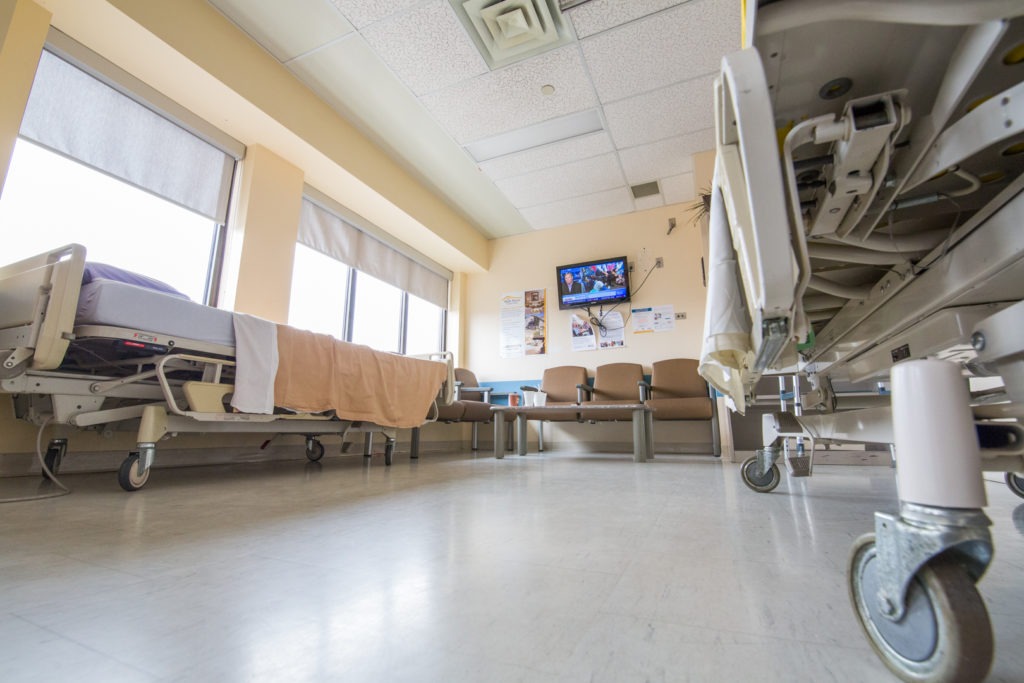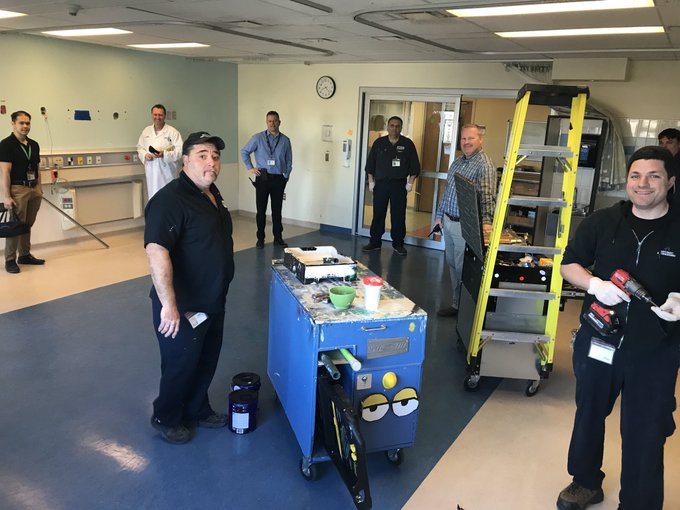
Planning additional space for COVID-19 patients
Hamilton healthcare providers have teamed up to increase available beds for when the COVID-19 pandemic reaches its peak in our area. The Ministry of Health has asked Hamilton Health Sciences (HHS) and St. Joseph’s Healthcare Hamilton (SJHH) to make 261 acute care beds and 90 critical care beds available by the end of April. We have already exceeded this target and are working on plans to increase capacity even further.
Where we are now
Normally, our hospitals operate at more than 100 per cent capacity. That means we don’t typically have empty space to put patients in when more people need care. Physical space is not the only consideration—staffing resources are also critical. In order to free up resources in our hospitals, we have reduced non-urgent services. We have also moved services to virtual care wherever possible. We have:
• Reduced surgeries by half
• Move one third of visits to virtual care
• Reduced on-site outpatient services by 80 per cent
• Scaled back diagnostic imaging by roughly half
“We’ve made incredible strides in creating immediate capacity,” says Rob MacIsaac, HHS President and CEO. “This is work none of us would have thought even possible three months ago.”
What is in progress
Our hospitals are converting less conventional space into patient rooms, including creating adult care spaces at McMaster Children’s Hospital. Some of this work is complete, and some is ongoing. These spaces will only be used if necessary. If needed, single patient intensive-care rooms will be used for two patients. The goal is to keep COVID-19 patients in concentrated areas of the hospital to reduce transmission.
In order to protect especially vulnerable patients at St. Peter’s Hospital and West Lincoln Memorial Hospital, we will avoid having COVID-19 positive patients at those sites if at all possible. We have also created a 24-7 hotline for long-term care homes to access virtual hospital care and avoid unnecessary hospital admissions of seniors.
“They will be triaged depending on what their need is and we’ll support the clinical teams in the long-term care homes to care for the patients and hopefully avoid those unnecessary visits to hospital,” says Sharon Pierson, Vice President of Community Medicine and Population Health for HHS. We know some patients will still need to come, but we’ll do our best to support the team.”
Additionally, HHS is recruiting hospital staff with help from the Ministry. We have contacted 700 recent retirees about returning to work during this pandemic. This process is ongoing.
What’s in planning
Together, HHS and St. Joseph’s Healthcare Hamilton (SJHH) are working to have more than 1,200 hospital beds ready for a surge of COVID-19 patients. This is being accomplished using a phased approach that considers the number of cases in our community and the rate at which COVID-19 is spreading.
We are planning for the potential creation of an alternative hospital space off-site that will likely occupy hotel or conference space. This type of space is ideal because of access to cleaning, food preparation, and washroom amenities. This facility would be operated and staffed by HHS and SJHH staff. It will potentially house between 400 and 500 patients, primarily those who require a minimal level of care and are currently in hospital because they are waiting for long term care or home-based supports.
“This virus is unpredictable, and we would rather be overprepared,” says MacIsaac. “Still, our plans are very much contingent on people observing the rules around physical distancing.”
MacIsaac encourages everyone to continue to follow public health guidelines for social distancing and stay home unless it is absolutely necessary to go out.

